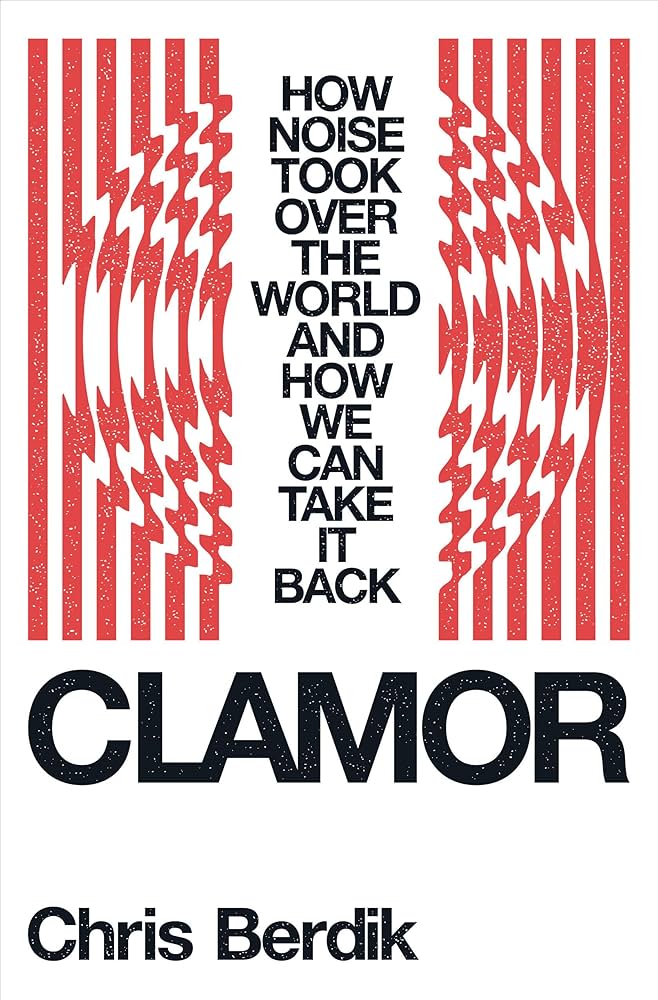
Clamor
Chris Berdik
Clamor by Chris Berdik explores how noise affects our health, focus, and environment. Using extensive research, Berdik shows that even noise below official thresholds can raise stress, disrupt sleep, impair learning, and harm wildlife. He argues that focusing only on decibel levels has limited noise-control efforts for over a century, letting its impact go unchecked. Berdik also makes the counterintuitive case that sometimes adding certain sounds can create calmer environments, and highlights examples of rethinking how we shape the sound around us.
Highlights
In one famous study of a New York City elementary school located near an elevated subway line, reading levels of second- and third-graders on the building’s train side lagged two to three months behind those of their peers in quieter classrooms; fifth- and sixth-graders on the noisy side were up to a year behind. Years later, after the New York Board of Education agreed to install sound-absorbing ceilings in classrooms and the transit authority added rubber pads to dampen the track noise, a follow-up study showed that reading scores had evened out across the school.
In fact, and counterintuitively, a problem with noise may get worse when the overall level of sound decreases. Sounds snag our attention far more easily in an otherwise quiet environment. When clear thinking is critical, a lone intelligible voice can hijack attention, while a livelier churn of background sound may actually bolster concentration. More fundamentally, equating noise with loudness underestimates the risks often prevalent in moderate-decibel domains, such as offices, schools, and hospitals. The distractions that can result are more than just annoying; they sap productivity, increase the number of costly mistakes, delay cognitive development, and pile on chronic stress.
Recognizing that noise is about a lot more than loudness leads, in turn, to the realization that pursuing fewer decibels is not the only solution to our sonic problems. Rather than focusing narrowly on decibel thresholds — above which sound is problematic and below which it can be largely ignored — we should try to foster sound environments that support our endeavors. While traditional noise control remains necessary, it’s not sufficient for reaching this larger goal.
Despite the decibel’s limitations, it provides a reliable, objective measure of acoustics that’s woven into almost every regulation and building code pertaining to sound. Soundscapes, by contrast, celebrate subjectivity and unique contexts. Prioritizing them will require new tools, methods, and metrics, so we can listen to how different design choices will change the sonic experience within a planned but not-yet-constructed building, and even predict how future soundscapes are likely to be perceived.
Researchers in Singapore found that people rated traffic noise as less loud when it was augmented with birdsong or the gurgle of a flowing stream. In a follow-up study, they showed that people in an outdoor seating area near an expressway perceived the traffic as less loud and gave the quality of the soundscape higher marks when birdsong or fountain sounds were added via a loudspeaker or an augmented reality headset.